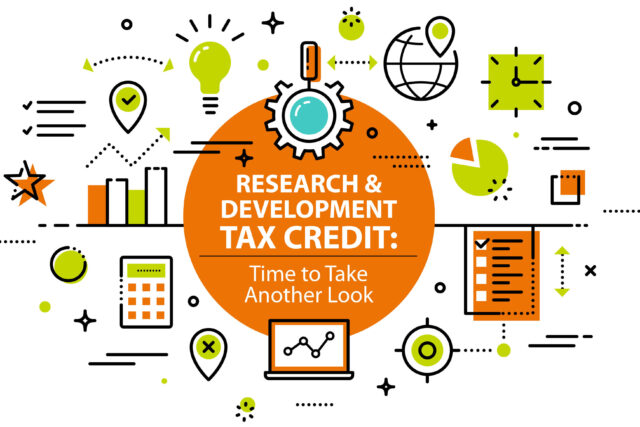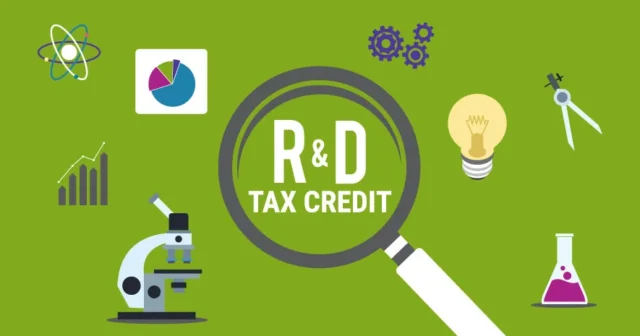
The Research and Development or R&D Tax Credits persists to provide reliable opportunities for reducing income tax liabilities for companies, frequently saving businesses hundreds of thousands of dollars. This is despite the fact that the Tax Cuts and Jobs Act (TCJA), which was passed as part of tax reform, brought about many new changes for businesses. However, many businesses are under the impression that the research and development credit does not apply to their operations, which is preventing them from realizing the credit’s full potential benefits.
Many companies that are eligible for the R&D credit do not submit their claims because they are unsure of the necessary documents, the kind of activities and expenses that qualify for the credit, and how the credit should be applied. Gaining an understanding of these subjects can lay the groundwork for locating and claiming the R&D credit, thereby reducing the amount of taxes that need to be paid by a corporation.
Businesses Fit For R&D Tax Credits

R&D tax credits enable eligible businesses to reduce their taxable income by an amount equal to the number of approved expenses for research and innovation. The FICA portion of payroll taxes can be partially offset by utilizing the R&D credit, which is available to small enterprises. You will need to look over Section 41 of the Internal Revenue Code as well as the regulations that go along with it in order to determine whether or not your company is eligible. The owners of small businesses who are interested in applying for research and development tax credits should read this article.
Expanding a company eventually necessitates the creation of new products, technology, and even industries themselves, as well as new systems. This expansion is essential to not only the success of your own company but also the success of the whole economy, which is dependent on innovation in order to continue developing.
However, innovation is impossible without spending a lot of money on research and development (R&D). There is a high probability that nurturing such changes will either result in a loss of capital and produce no return on investment (or take numerous rounds of development to finally become lucrative) Because of these expenditures, some businesses choose not to invest in research and development. The research and development tax credit was established as an incentive for companies to maintain their level of innovative activity.
Diving Into R&D Tax Credits

The R&D tax credits is another name for the research and development tax credit, which is another name for the research and experimentation tax credit. The Research and Development (R&D) Tax Credit, which is a provision of the United States Internal Revenue Code, serves to foster economic expansion by motivating businesses to make investments in areas of research, innovation, and the development of new technologies.
It was initially implemented in 1981, and then it was routinely revised throughout the succeeding decades. The Research and Development (R&D) Tax Benefit was made permanent in 2015 after President Barack Obama signed the PATH Act, which also expanded several of the aspects of the credit. Since 2016, the credit for research and development against taxes can be used to balance the alternative minimum tax, and it can also be used to offset payroll taxes for new firms. The Tax Cuts and Jobs Act (TCJA) included additional reforms to the tax credit, which were subsequently implemented in 2025.
The value of a tax credit can be deducted from the taxpayer’s overall tax liability, making it possible for the taxpayer to operate their business in a tax-efficient manner. The R&D tax credit is for “expenses paid or incurred for eligible research,” as stated by the Internal Revenue Service (IRS).
The Research and Development (R&D) Tax Credit was made permanent and its application was broadened in 2015 by the Protecting Americans from Tax Hikes (PATH) Act, which created a possible tax benefit for small enterprises and start-up companies. These clauses were not changed by the TCJA. As a result of the R&D credit being made permanent, businesses are now in a position to rely on it and use it as part of their annual strategy for tax planning.
R&D Tax Credits Four-Part Test

After looking at all four parts of the test, businesses that believe their activities fall into the category of “business as usual” can find that they are, in fact, creative.
Qualified purpose
The research must have the goal of developing a new or enhanced business component, which will lead to either a new or improved function, performance, reliability, or quality as a result of the work. A business component can be anything from a product to a process to computer software to a technique to a formula to an idea. This is a broad concept that can be used to a variety of different fields.
Elimination of uncertainty
A company is required to provide evidence that it has made an effort to reduce the amount of uncertainty surrounding the creation or improvement of a business component. The existence of uncertainty is denoted by the fact that it has been established that the information at the company’s disposal does not establish the capability or method for creating or upgrading the business component or the proper design of the business component. The design of a project is rarely finalized at the beginning stages of development, despite the fact that many businesses feel positive about their capacity to meet technical goals or have a tried-and-true approach to discovering answers.
Process of experimentation
A corporation is required to provide evidence — which can be in the form of modeling, simulation, methodical trial and error, or another approach — that it has analyzed one or more potential options to reaching the intended result. A process of recurrent trial and error may be the natural progression of certain undertakings. Activities in the fields of engineering, software development, and clinical research, to name a few examples, all rely on a procedure that may evaluate one or more possible solutions. The definition is also sufficiently all-encompassing to be applicable to a great variety of different pursuits.
Technological in nature
Experimentation is a method that requires the utilization of the hard sciences, such as engineering, chemistry, biology, physics, or computer science. It is essential to keep in mind that businesses are not compelled to go beyond, build upon, or develop the scientific ideas that are already in place.









